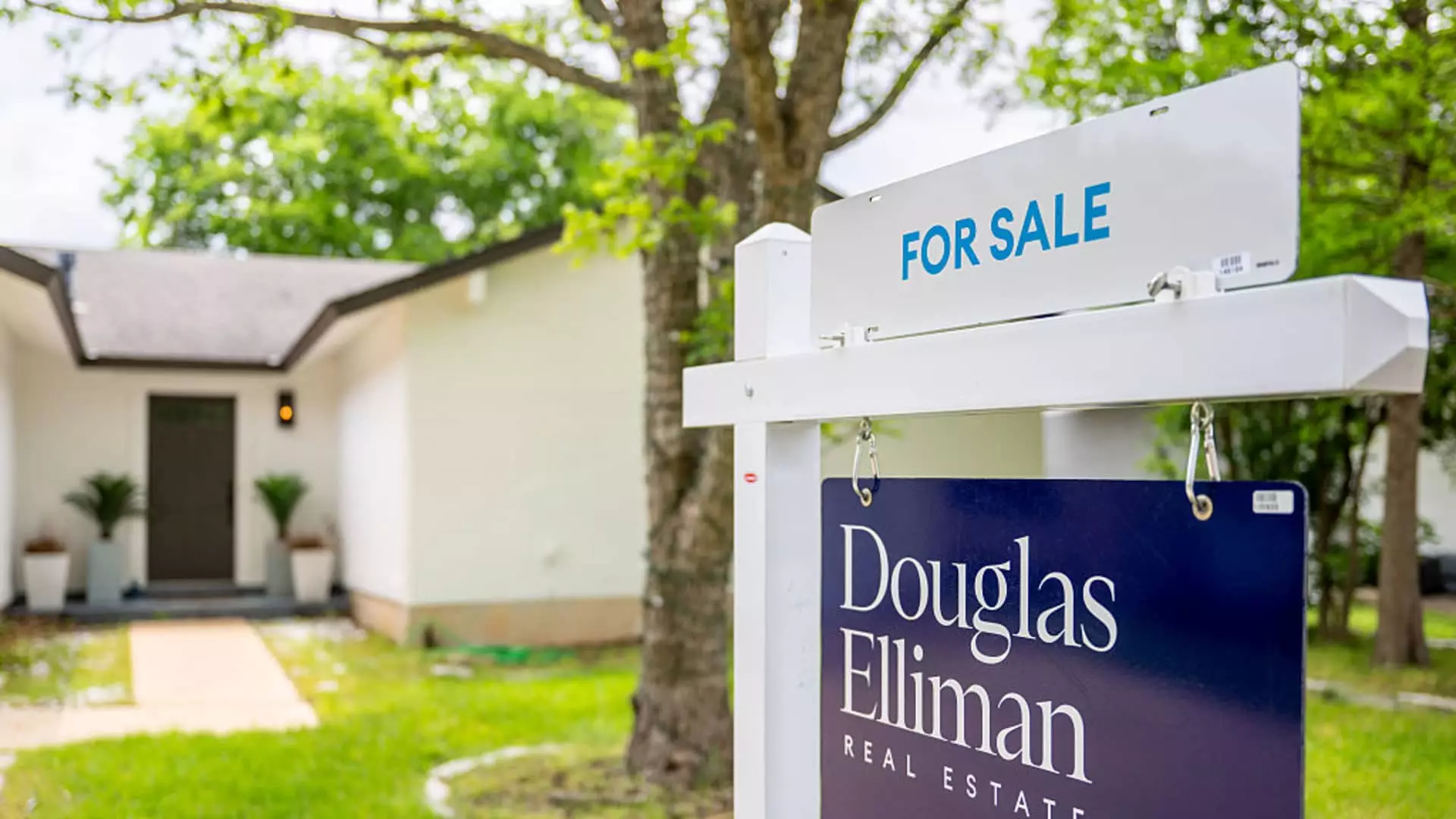In May, sales of previously owned homes experienced a modest uptick of 0.8% from April, shifting the annualized rate to 4.03 million units. This slight increase is a stark contrast to analysts’ expectations of a 1% decline, illustrating the unpredictable nature of current real estate trends. Despite this glimmer of hope, sales still lagged behind figures from May of last year by 0.7%. The most notable performance arrived from the Northeast, which saw a 4.2% rise in sales month-over-month, while regions like the West suffered a significant downturn, declining by 5.4%.
As the most expensive housing market in the country, the West region’s struggles highlight a broader issue. The real estate market often mirrors economic conditions, and the discrepancies seen in different areas speak volumes about the underlying factors influencing buyer behavior and market demand. Such regional disparities suggest that while localized incentives might spur sales in one area, others may remain stagnant due to inflated prices.
The Mortgage Rate Dilemma
The rallying cry for boosting home sales continues to revolve around mortgage rates, which are significantly high and hovering above 7%. Despite some stabilization earlier in the year, the steady climb of these rates has dissuaded many prospective buyers from entering the market. Lawrence Yun, the chief economist for the National Association of Realtors, indicated that lower mortgage rates would likely invigorate the market. This insight underscores a critical aspect of the housing landscape: financial barriers continue to restrict mobility and decision-making for potential homeowners.
With the theory that decreasing rates in the latter half of the year could catalyze a rebound in home sales, policymakers must prioritize stabilizing interest rates. The bond between mortgage rates and home buying behavior illustrates how macroeconomic factors exert their influence on individual decision-making in profound ways. The hope expressed by many homeowners and buyers alike rests on the belief that more favorable rates could generate a surge in market activity, potentially balancing out some of the recent stagnation.
Supply Outpaces Demand—But Just Barely
A critical factor influencing sales in May was the increase in housing inventory, which rose to 1.54 million units—a whopping 20% higher than the previous year. However, at a 4.6-month supply relative to current sales, this availability remains lightly skewed to the seller’s side historically, keeping prices at a tipped equilibrium.
Despite the increased availability, the median price for an existing home reached an all-time high of $422,800—up 1.3% year-over-year. The implication that supply is burgeoning yet prices remain robust underlines a unique paradox in the housing dynamics, where demand seems unrelenting even as market options expand. Interestingly, 28% of homes sold were above the listing price, a notable increase, albeit short of the 30% seen last year. This statistic suggests that buyers are still willing to engage competitively when the right opportunity presents itself, indicating that a segment of the market remains resilient even amidst financial pressure.
Market Fragmentation and Emerging Trends
Interestingly, the market appears to be experiencing fragmentation within price tiers. The luxury segment, defined here as homes priced over $1 million, is witnessing a decline compared to last year, contrasting the resilience shown in the $750,000 to $1 million bracket. As Yun observes, the previous trend of the high-end market outperforming others has shifted, hinting at deeper currents affecting consumer confidence and investment strategies.
One of the more striking trends is that first-time buyers accounted for only 30% of home purchases, a one-point decline from last year—suggesting that many are holding off and waiting for more favorable conditions. Coupled with 27% of transactions being all-cash purchases, the overall landscape reflects a growing divide, where buyers who can afford higher prices continue to thrive while newcomers remain marginalized. This shift points to the urgent need for easing entry points for first-time buyers, as their participation is crucial for fostering a balanced housing ecosystem.
Such complexities laden the current market environment, necessitating a comprehensive approach to policy, regulation, and consumer finance strategies that can stimulate equitable growth across all segments. Only time will unravel the intricate interplays at work, but the call for clever adjustments and bold initiatives has never been clearer.


Leave a Reply